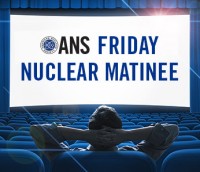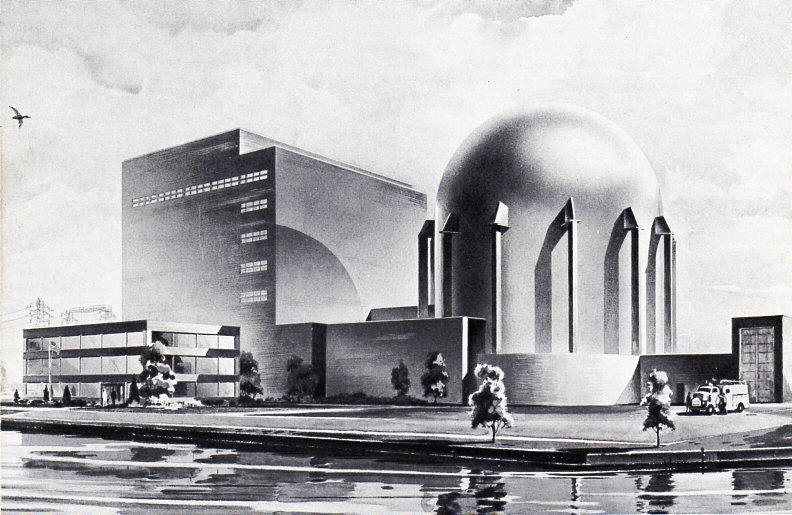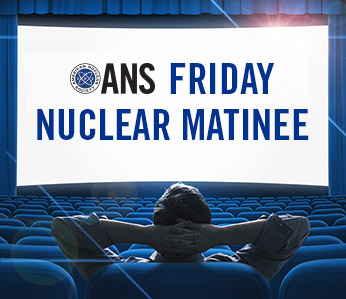Nuclear Energy Blog Carnival 298
 The 298th edition of the Nuclear Energy Blog Carnival has posted at Yes Vermont Yankee.
The 298th edition of the Nuclear Energy Blog Carnival has posted at Yes Vermont Yankee.
The ANS Nuclear Cafe is a blog owned and edited by the American Nuclear Society. Information contained on the ANS Nuclear Cafe has been provided by numerous sources. Therefore, the American Nuclear Society assumes no responsibility or liability for the accuracy of information contained herein. DISCLAIMER: The views expressed in posted articles do not necessarily reflect the views of the American Nuclear Society. The views expressed here are those of the individual authors. ANS takes no ownership of their views. The American Nuclear Society assumes no responsibility or liability for any use or operation of any methods, products, instructions, or ideas contained on this site.

A message from Electrical Builders, Ind.
America’s Top Performing Nuclear Plants Rely on Electrical Builders, Industries to Expand and Extend the Life of Their Critical Electrical Assets
 The 298th edition of the Nuclear Energy Blog Carnival has posted at Yes Vermont Yankee.
The 298th edition of the Nuclear Energy Blog Carnival has posted at Yes Vermont Yankee.
NASA's December 2015 report: Curiosity on Mars. Brought to you with the help from nuclear technology! Enjoy!
Wisconsin may be lifting its decades-old nuclear power ban, a move that would allow the construction of new nuclear facilities to provide clean energy throughout the state. The end of the 1983 moratorium heralds the beginning of new era; indicating a reason for optimism that lawmakers throughout the United States may soon make similar changes.
The moratorium that changed Wisconsin Power
The world was in upheaval in 1983, particularly within the nuclear sector. The accident at Three Mile Island in the late 1970s set loose a tsunami of public fear against nuclear power, despite the majority of these concerns being largely unfounded and based on biased opinion. Across the country, politicians rushed to jump on the bandwagon of nuclear power bans, without researching the ultimate cost both to taxpayers and the environment in terms of rising energy bills and the reality of using dirty, coal-fired power to replace clean nuclear power production.
Under Governor Anthony Earl, Wisconsin legislators voted in 1983 to ban the construction of any new nuclear plants until the federal government met its responsibility of creating a repository for storing nuclear waste. The bill also demanded that legislators be assured that nuclear power would be less expensive than other forms of energy before the moratorium was lifted. As the federal government was unable to meet its obligations concerning the spent fuel repository, the bill has effectively become a ban on the construction of any new nuclear power plants anywhere in the state.
Scott Walker: A vision for clean energy
Although there have been movements to lift the nuclear ban prior to 2016, none of them have been successful. This year, Governor Scott Walker took initiative to lift the moratorium and support Assembly Bill 384, legislation that would allow Wisconsin to once again invest in the construction of new nuclear power facilities.
The bill has received bipartisan support as well as the backing from a number of special interest groups, many of which are usually found on opposite sides of the energy issue. Clearly, this move has broad-reaching implications for the future of Wisconsin-and the nation's-overall energy mix.
The past few years have seen several setbacks for the success of nuclear in the state. Dominion Power, owners of the fourth nuclear power plant in Wisconsin, the Kewaunee Power Station, elected to shut it down in 2012. According to Dominion's chairman and chief executive officer, "the decision was based purely on economics. Dominion was not able to move forward with our plan to grow our nuclear fleet in the Midwest to take advantage of economies of scale." Low natural gas prices claimed nuclear as a victim in this case, but the new bill has reinvigorated interest in its many benefits.
Several reasons to support the success of this bill are immediately apparent. First, the energy crisis has grown to mammoth proportions-there is simply no way to sate our nation's energy appetite while simultaneously endeavoring to implement the Clean Power Plan and shutter coal plants. Second, nuclear energy is nearly carbon free and, when carefully managed, very safe. Nuclear is needed if the United States is to continue making further strides in reducing its overall CO2 emissions and eliminating other atmospheric pollutants associated with dirty fossil fuels.
Wisconsin's manufacturing sector needs nuclear
Wisconsin's business and manufacturing sector has come forth to support lifting the ban on nuclear in the state. Lucas Vebber, director of environmental and energy policy for Wisconsin Manufacturers and Commerce, endorsed the new legislation, saying, "Wisconsin needs to have a serious conversation about the future of electricity generation and unless we repeal the moratorium, nuclear energy cannot be a part of the conversation."
Unlike solar and wind, nuclear is a secure, reliable source of baseload electricity. Wisconsin's substantial manufacturing base creates jobs and income for thousands of residents throughout the state and is a foundational aspect of the state's overall economy. By employing nuclear energy, the manufacturing sector will have access to large-scale and round-the-clock power that doesn't negatively impact the environment.
Nuclear gains support in Wisconsin and nationwide
Currently, the two Point Beach reactors operated by NextEra Energy Inc. supply the state with 15.5 percent of its total energy and 72 percent of its zero-emissions energy. Coal and natural gas continue to reign supreme, both in Wisconsin and across the United States, but other states are also showing signs of leaning toward nuclear for the future of their energy mix. As burning fossil fuels grows more expensive and environmentally unjustifiable, the nuclear sector has reason to expect more legislative victories down the line.
Beth Piper is a science author from Chicago, Ill. Ms. Piper has a strong interest in nuclear power as a clean energy source.
 Today's Matinee... learn about what goes on at a reactor facility to keep the environment safe and ensure all operations are at top level. Click to watch this short video from Canadian Nuclear Safety Commission.
Today's Matinee... learn about what goes on at a reactor facility to keep the environment safe and ensure all operations are at top level. Click to watch this short video from Canadian Nuclear Safety Commission.
In the 1960s, the United States Atomic Energy Commission (AEC) carried out a fairly large number of investigations into the use of nuclear energy for purposes other than just the production of electricity. One of the major interests was the use of nuclear energy for desalination of seawater (producing fresh water for people and for crops)-and the studies into this area eventually led to an idea, which may find new interest today.
 The 296th edition of the Nuclear Energy Blog Carnival has posted at Neutron Bytes.
The 296th edition of the Nuclear Energy Blog Carnival has posted at Neutron Bytes.
ANS member Sam Brinton talks about his passion, nuclear waste policy and changing the outdated images of nuclear advocates.

1955 artist's concept of the Enrico Fermi Atomic Power Plant. (Will Davis collection)
In the previous installment, we looked at the first of four projects to study nuclear power plants in the 1950-1953 time frame, as part of a group of studies for the U.S. Atomic Energy Commission (AEC). This time we'll look at two more.
 The 295th edition of the Nuclear Energy Blog Carnival has posted at Atomic Insights.
The 295th edition of the Nuclear Energy Blog Carnival has posted at Atomic Insights.
 The 294th edition of the Nuclear Energy Blog Carnival has posted at Hiroshima Syndrome.
The 294th edition of the Nuclear Energy Blog Carnival has posted at Hiroshima Syndrome.
Today's Friday Nuclear Matinee is about using irradiation to improve food safety and quality. It comes to us from the International Atomic Energy Agency. For more, check out NuclearConnect.org and the Agriculture Applications. Grab your popcorn and enjoy.

Just before the end of 2015, on December 30, the last operating Magnox reactor anywhere in the world was shut down for the final time, which ended a history for this type dating all the way back to 1956.
The president of the American Nuclear Society, Eugene Grecheck, was interviewed during COP21 in Paris, France. Enjoy this short video.
No more silence. That was the rallying cry of our active band of nuclear supporters at the United Nations Framework Conference on Climate Change (COP21) in Paris over the past two weeks. The conference brought together nuclear societies, environmentalists, government and young generation representatives who agreed that we need to do a better job of communicating with the public and policymakers and stop allowing anti-nuclear advocates to have the loudest voice. We took a big step with our COP presence.
Starting a nuclear career as a nontraditional student can be daunting. I entered the academic world in 2009 as a 25-year-old with eight years of culinary arts under my belt. I am not your typical nuclear engineering student; I was not a model student and hadn't studied any higher-level math or physics courses in high school. I was a professional cook and chef instructor working with my hands and exploring the world of food for years before making a shift to nuclear.
In 1950, there were few nuclear reactors of any sort operating anywhere in the world, even though it had been eight years since the startup of the very first pile. In that intervening time, the Manhattan Project had given way to the U.S. Atomic Energy Commission (AEC) and a variety of reactor types were discussed, debated, designed, and scheduled. None of these was what we today would call a true commercial nuclear plant-built for the purpose of selling electricity to customers. Instead, they were test types, prototypes, and experimental or research types. Large reactors were running at Hanford; these did not produce electricity, but rather plutonium for AEC weapons programs. Atomic energy was still considered far too undeveloped for serious consideration as a straight commercial power producer, and private industry was still barred from most all activities in the nuclear industry, embryonic as it was.
 The 287th edition of the Nuclear Energy Blog Carnival has posted at Yes Vermont Yankee.
The 287th edition of the Nuclear Energy Blog Carnival has posted at Yes Vermont Yankee.
While the delegates discussing the actual COP agreement are sequestered in a building not accessible to others, there is important work going on elsewhere in Paris when it comes to nuclear energy advocacy. Even if the political solutions don't work here, there is no reason the technical solutions can't continue full steam ahead to produce clean energy for all who want and need it.